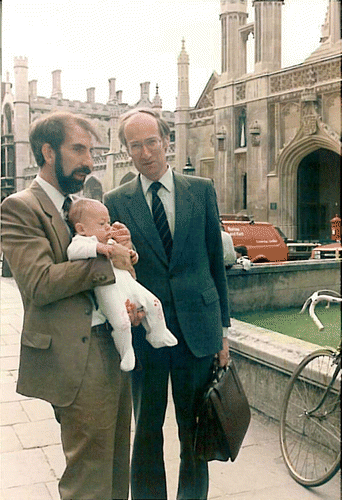Reflections on the 22nd International Liquid Crystal Conference (ILCC 2008) and looking forward to a major new prize
In late June 2008, liquid crystal scientists from around the world gathered on the beautiful Korean island of Jeju for the 22nd International Liquid Crystal Conference (ILCC 2008). Under the thematic title Molecular Engines of Creation, over 1000 papers were presented by delegates from more than 40 countries. This special issue contains articles based on plenary and invited lectures presented at ILCC 2008. These should not, however, be viewed as the conference proceedings (which will appear in Molecular Crystals and Liquid Crystals), but rather as a collection of invited articles spanning the broad range of themes encompassed by ILCC 2008. These include the highly topical areas that did so much to define the vibrancy and success not only of ILCC 2008 but also, more generally, the field of liquid crystals. Thus, this special issue contains articles on: molecular complexity and controlling self-organising processes and supramolecular assembly; the phase behaviour of lipid membranes; theoretical and experimental studies on biaxial nematics; photoinduced phase transitions; high-resolution adiabatic scanning calorimetry as a means of characterising phase transitions; recent progress in developing high-performance dual-frequency liquid crystal materials; the development of advanced optical configurations with improved viewing angles and contrast ratios for transmissive and reflective liquid crystal displays; controlling the alignment of nematics using nanostructured polymer layers.
ILCC 2008 also saw the presentation to Professors Sandeep Kumar and Igor Muševič of the first ILCS Mid-Career Awards. Professor Kumar received the LG Display Mid-Career Award for his work on the synthesis of discotic liquid crystals, including the first room-temperature system, the design of nematic discotic materials, innovative chemistry and the inclusion of nanomaterials in discotic systems. Professor Musevic received the Samsung Mid-Career Award for his work on the physical studies of antiferroelectric and ferroelectric liquid crystals, measurement of interfacial forces, colloidal particles and their manipulation in nematic liquid crystals. I am delighted that this special issue contains contributions from both recipients describing some of the work for which they received their awards.
A major new award: The Luckhurst–Samulski Prize
In the very first issue of Liquid Crystals, now approaching a quarter of a century ago, the Editors, Geoffrey Luckhurst and Ed Samulski, wrote that liquid crystals ‘is a burgeoning field of interdisciplinary endeavour and now is an exciting time to be involved in liquid crystal research’ (Citation 1 ). Some 20 years later in the preface to the 20th Anniversary Issue, they noted that ‘these words seem as true today as when they were written’ (Citation 2 ) as indeed they are still, as evidenced by the sheer breadth and quality of the work presented at ILCC 2008.
Throughout the last 23 years Liquid Crystals has been the only journal devoted exclusively to the area of liquid crystals, providing an essential service to the liquid crystal community. In return, the community has strongly supported the Journal making it undoubtedly a major success. Writing in the 20th Anniversary Issue, Mertesdorf and Ringsdorf remarked ‘congratulations to a journal that from its start was based on tradition and had innovation as its goal… .and is now recognised even outside the liquid crystal community as one of the important publishing possibilities for the results of liquid crystal research taken in a broad sense.’ (Citation 3 ).
The success of the journal has required three main components: the Editors and Editorial Board, a vibrant community and last, but by no means least, a supportive publisher, Taylor & Francis. This visionary publisher has a proud tradition, reaching back over 200 years, of service to and collaboration with the scientific community. They were the ideal publishers for Liquid Crystals and have proved to be strong and enthusiastic supporters of our community. Not only do they publish Liquid Crystals but also Liquid Crystals Today and provide generous sponsorship to a number of conferences.
It was no surprise, therefore, when the publishers contacted me recently to discuss the possibility of introducing a prize for the best paper published each year in Liquid Crystals. I immediately thought that this was a wonderful idea and one I believe will be a real stimulus to the liquid crystal community. The award will be presented at either the ILCC or the ECLC depending on the year; detailed terms and conditions will be published soon on the journal's homepage.
A prize needs a name, and we could think of no more fitting a name for this new prize than the Luckhurst–Samulski Prize, not only in honour of their roles in founding the journal but also for their outstanding contributions to liquid crystal science. The Luckhurst–Samulski Prize will be awarded for the first time to a paper published in Liquid Crystals in 2009 and I believe that this will quickly become a major and highly valued award in our community.
References
- Luckhurst , G. R. and Samulski , E. T. 1986 . Liq. Cryst. , 1 : 1
- Luckhurst , G. R. and Samulski , E. T. 2006 . Liq. Cryst. , 33 : 1227 – 1228 .
- Mertesdorf , C. L. and Ringsdorf , E. T. 2006 . Liq. Cryst. , 33 : 1323 – 1327 .
